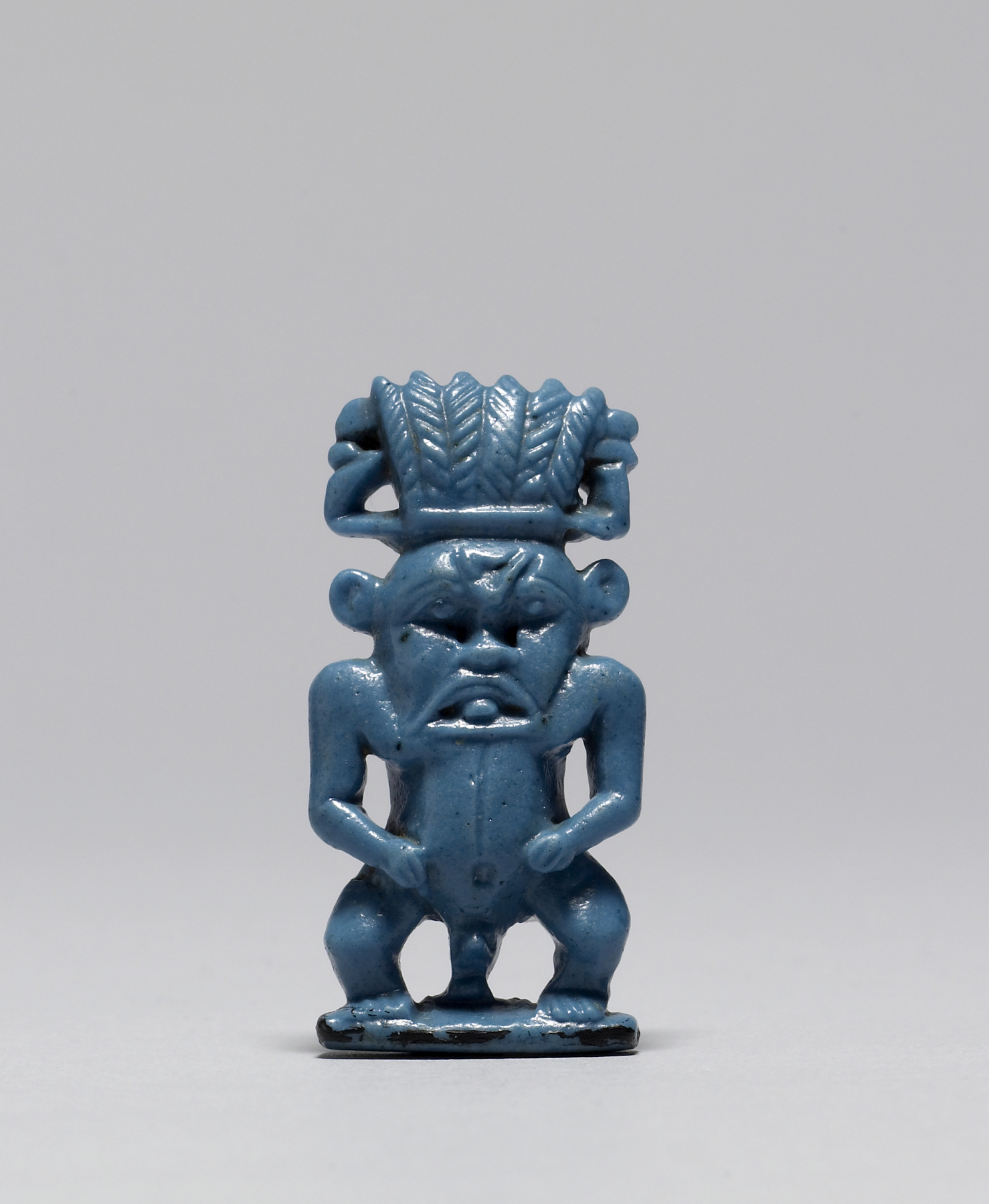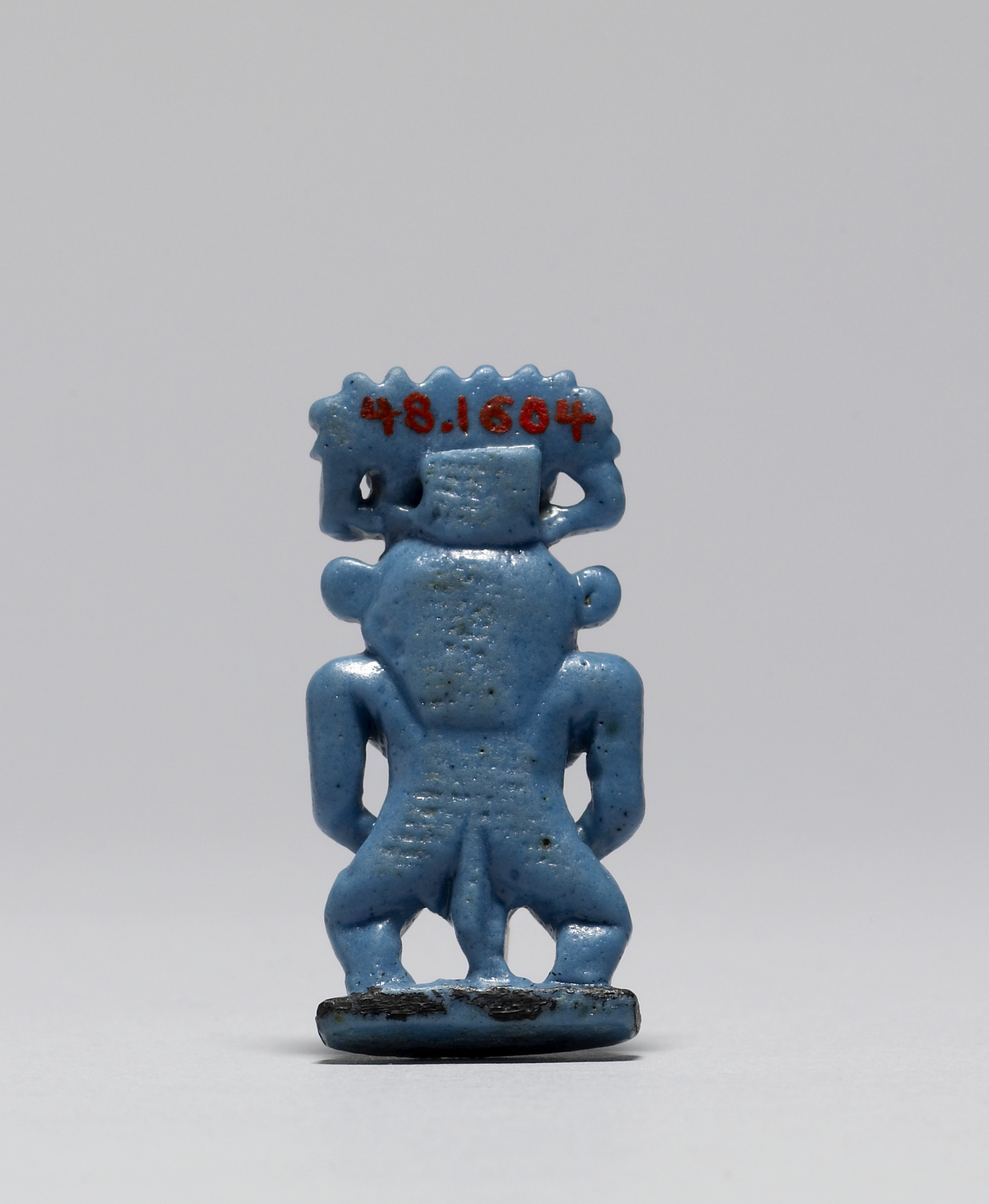Bes
(Ancient Egypt and Nubia )
This dwarf-like, protective deity was very popular in ancient Egypt. Bes is represented with the nude body of a dwarf, grotesque facial features, and the ears and mane of a lion. He wears a tall feather-crown and usually rests his hands on his hips. Known from as early as the Middle Kingdom (ca. 2000 BCE), Bes was venerated as a protector of the home, family, and childbirth, and for that reason figures prominently in domestic magic and amulets. His close connection to all aspects of fertility and sexuality is demonstrated by the presence of his image in the "Birth-houses"-shrines associated with temples of the Late Period and Ptolemaic period. He also had a special relation to the goddess Hathor and performed in her retinue as a musician and dancer.
This amulet of Bes is a variant of the standard type, representing the god with a protruding tongue and with uraei (cobra serpents), crowned by sun-disks which flank his feathered crown. A rectangular base and a loop behind the head complete the pendant.
Provenance
Provenance (from the French provenir, 'to come from/forth') is the chronology of the ownership, custody, or location of a historical object. Learn more about provenance at the Walters.
Henry Walters, Baltimore [date and mode of acquisition unknown]; Walters Art Museum, 1931, by bequest.
Conservation
| Date | Description | Narrative |
|---|---|---|
| 7/23/1959 | Treatment | cleaned |
| 7/23/1998 | Examination | examined for condition |
Geographies
Egypt (Place of Origin)
Measurements
H: 1 1/2 x W: 1 3/8 x D: 1/16 in. (3.75 x 3.46 x 0.15 cm)
Credit Line
Acquired by Henry Walters, by 1931
Location in Museum
Accession Number
In libraries, galleries, museums, and archives, an accession number is a unique identifier assigned to each object in the collection.
In libraries, galleries, museums, and archives, an accession number is a unique identifier assigned to each object in the collection.
48.1604








